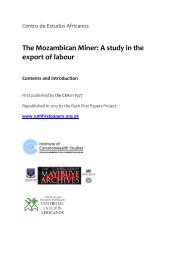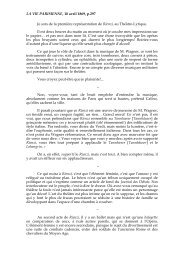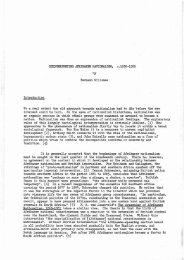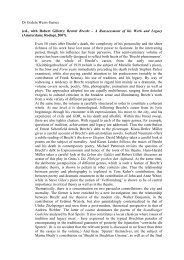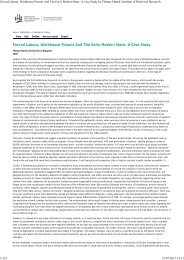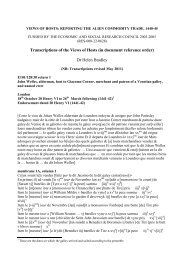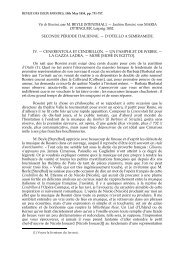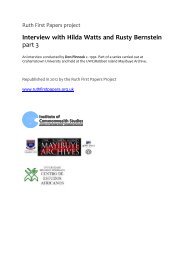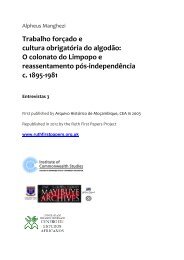Roraima: Brazil's northernmost frontier by John Hemming - SAS-Space
Roraima: Brazil's northernmost frontier by John Hemming - SAS-Space
Roraima: Brazil's northernmost frontier by John Hemming - SAS-Space
Create successful ePaper yourself
Turn your PDF publications into a flip-book with our unique Google optimized e-Paper software.
Mineral prospecting<br />
The monumental statue in the middle of the square that forms Boa Vista's<br />
civic centre is of a garimpeiro or prospector. This is a curious choice.<br />
Although prospectors have been pioneers on remote rivers of <strong>Roraima</strong>, they<br />
have made little lasting contribution to its population or economy. Garimpeiros<br />
are migratory adventurers who push up rivers whenever there is a<br />
rumour of gold or diamonds. They work in small teams of men without<br />
families.<br />
At times in <strong>Roraima</strong>'s recent history, gold and diamonds have attracted<br />
waves of immigrants from other parts of Brazil or have lured labourers away<br />
from ranches and farms. But as soon as a river's yield declines, the prospectors<br />
move on, often across <strong>frontier</strong>s into Venezuela or Guyana. Their prospecting<br />
produces a steady supply of diamonds or gold dust. But both commodities<br />
are of high value and easily smuggled, so that little return from<br />
prospecting enters <strong>Roraima</strong>'s official taxable economy. The garimpeiros 9<br />
primitive methods of pumping and panning destroy river beds and probably<br />
miss most of the potential mineral wealth.<br />
As early as 1920, Joaquim Gondim spoke of a small number of prospectors<br />
seeking the Territory's mineral riches on remote rivers. There was a diamond<br />
and gold rush in 1940, a year of agricultural drought and the lowest ebb for<br />
<strong>Roraima</strong>'s cattle herd. The 1940s were a peak period for prospecting, with<br />
discoveries of some 11,000 carats a year. But the mother lode of diamonds<br />
has never been discovered, so that each area of garimpagem is temporary. In<br />
the 1940s, prospectors followed Bras Dias de Aguiar's boundary commission<br />
into the upper Amajari and the area around Mount Tepequem. In 1960<br />
garimpeiros started to invade the upper Cotingo in the extreme north of<br />
<strong>Roraima</strong>, but they were prevented from entering its upper forests <strong>by</strong> the warlike<br />
Ingariko. The Suapi river, tributaries of the Quino and Mau, and<br />
recently the Uraricaa and Erico rivers are active areas for prospecting. Seven<br />
per cent of <strong>Roraima</strong>'s population is reckoned to live from garimpagem, and<br />
its annual yield was thought to be over 80,000 carats of diamonds and 750<br />
kilos of gold. 82 A decline in prospecting activity was dramatically reversed in<br />
1988, when gold was discovered on the upper Mucajai - within the limits of<br />
the Yanomami Indian Park. This discovery brought a massive gold rush<br />
flooding in from all parts of Brazil.<br />
The road link<br />
The most important factor stimulating the accelerating growth of <strong>Roraima</strong>'s<br />
population was the ending of the region's isolation from the rest of Brazil.<br />
In 1970 work finally started in earnest on the 775-km Manaus to Boa Vista<br />
road - the land link that had been proposed and planned so often during the<br />
previous century. It eventually took seven years to build 624 kms of unpaved



